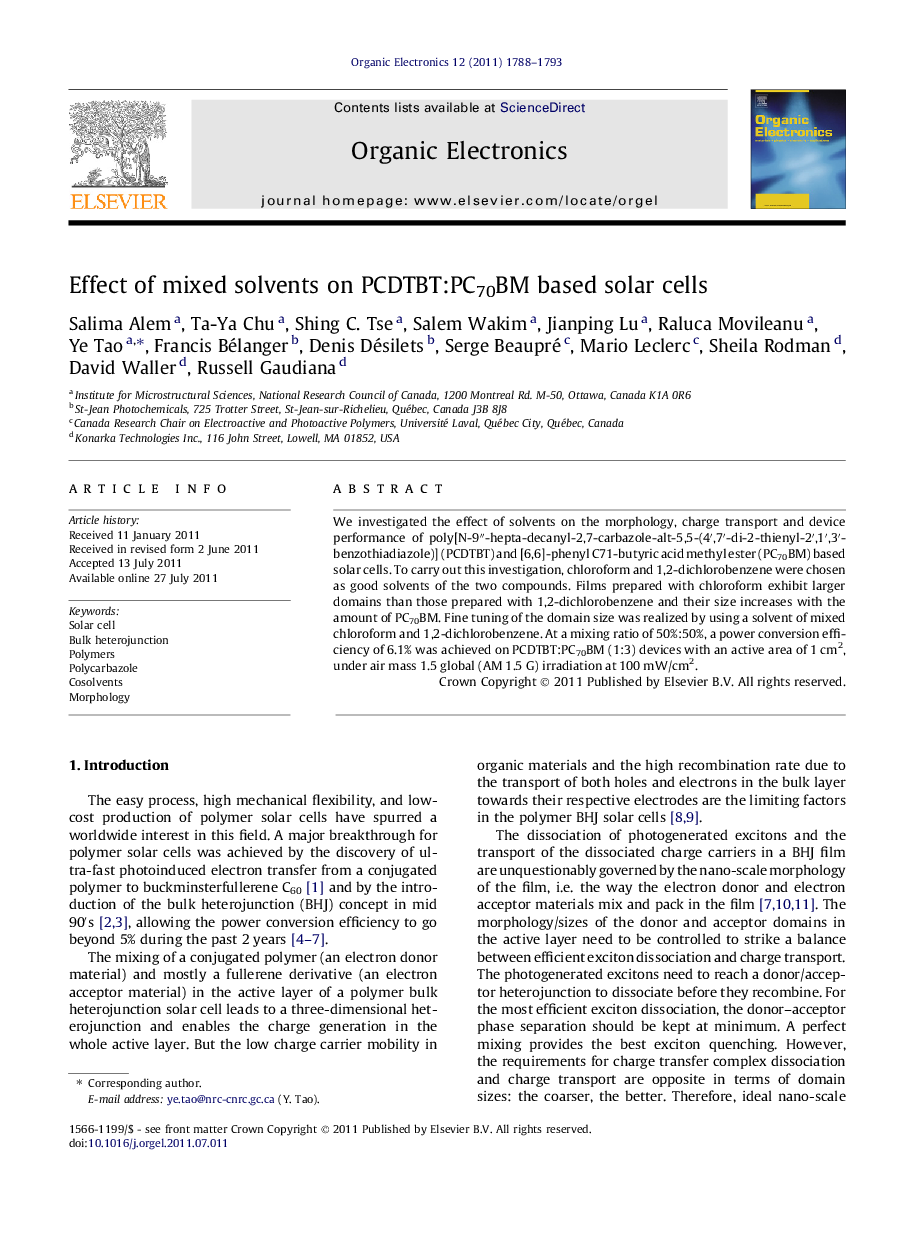| Article ID | Journal | Published Year | Pages | File Type |
|---|---|---|---|---|
| 1264723 | Organic Electronics | 2011 | 6 Pages |
We investigated the effect of solvents on the morphology, charge transport and device performance of poly[N-9″-hepta-decanyl-2,7-carbazole-alt-5,5-(4′,7′-di-2-thienyl-2′,1′,3′-benzothiadiazole)] (PCDTBT) and [6,6]-phenyl C71-butyric acid methyl ester (PC70BM) based solar cells. To carry out this investigation, chloroform and 1,2-dichlorobenzene were chosen as good solvents of the two compounds. Films prepared with chloroform exhibit larger domains than those prepared with 1,2-dichlorobenzene and their size increases with the amount of PC70BM. Fine tuning of the domain size was realized by using a solvent of mixed chloroform and 1,2-dichlorobenzene. At a mixing ratio of 50%:50%, a power conversion efficiency of 6.1% was achieved on PCDTBT:PC70BM (1:3) devices with an active area of 1 cm2, under air mass 1.5 global (AM 1.5 G) irradiation at 100 mW/cm2.
Graphical abstractFigure optionsDownload full-size imageDownload as PowerPoint slideHighlights► We show the impact of solvents on the morphology of PCDTBT based solar cells. ► We fine tune the domain size in PCDTBT:PC70BM films by using a mixed solvent. ► We obtained a high PCE of 6.1% from PCDTBT:PC70BM devices of 1 cm2.
